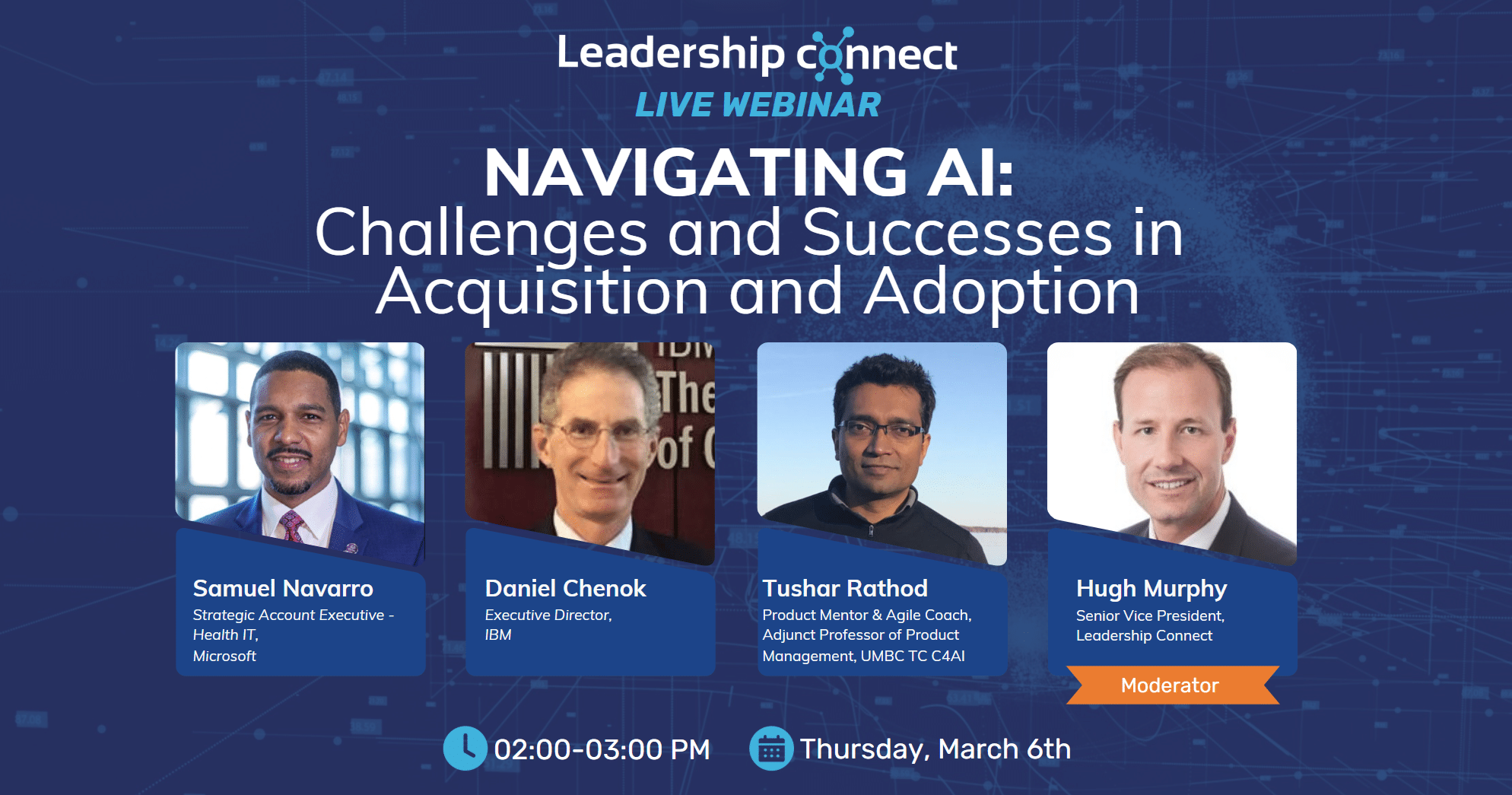Navigating AI: Challenges and Successes in Acquisition and Adoption
On March 6th, Leadership Connect launched its latest webinar series with an insightful and timely conversation about Navigating AI: Challenges in Acquisition and Adoption with experts, Samuel Navarro of Microsoft, Daniel Chenok of IBM, and Tushar Rathod of UMBC.
AI holds the potential to accelerate numerous government processes, yet its seamless integration requires substantial effort, research, and resources. The procurement and adoption of AI pose significant challenges, as agencies must navigate technical complexities, governance, security, privacy, and civil rights considerations. In a recent Leadership Connect webinar, experts shared their experiences in AI procurement and implementation, offering insights into strategies, obstacles, and best practices.
Missed the conversation? Check out the highlights below and watch the whole thing here and make sure to follow our Events Page to get in on the next conversation.
1. Understanding the Procurement Complexities of AI
Government agencies often struggle with the bureaucratic hurdles of AI acquisition. Unlike traditional IT procurement, AI adoption requires:
- Comprehensive risk assessment for security, privacy, and ethical concerns.
- Evaluation of vendors’ technical capabilities and compliance with government standards.
- Long-term planning for AI’s adaptability and evolving regulatory requirements.
2. Identifying the Right AI Strategy
Selecting an AI strategy involves more than just choosing a tool—it requires alignment with an agency’s mission and operational structure. Experts emphasized:
- The importance of a clear AI roadmap tailored to an agency’s specific needs.
- A focus on interoperability with existing systems.
- Continuous evaluation and adjustments as AI capabilities and regulations evolve.
3. Overcoming Implementation Challenges
Once AI tools are procured, integration poses another layer of complexity. Common challenges include:
- Workforce training and change management to ensure staff can effectively use AI tools.
- Managing biases in AI models to ensure fair and transparent decision-making.
- Addressing security and data privacy concerns through robust governance frameworks.
4. Ensuring Compliance and Ethical AI Use
Agencies must balance innovation with accountability. Key considerations include:
- Adhering to federal regulations on AI usage.
- Establishing clear ethical guidelines to protect civil rights and liberties.
- Implementing continuous monitoring to detect and mitigate AI-related risks.
5. Success Stories and Lessons Learned
Speakers shared case studies of successful AI adoption, highlighting:
- How agencies overcame initial resistance through stakeholder engagement and education.
- The role of partnerships between government, industry, and academia in refining AI applications.
- Examples of AI-driven efficiencies, such as automating administrative processes and improving data-driven decision-making.
AI adoption in government is a complex but rewarding endeavor. As agencies continue to explore AI’s potential, success depends on careful planning, cross-sector collaboration, and a strong commitment to ethical and regulatory compliance. By learning from past challenges and leveraging best practices, government leaders can harness AI’s transformative power while mitigating risks.
For more insights on government technology and leadership, stay connected with Leadership Connect.







